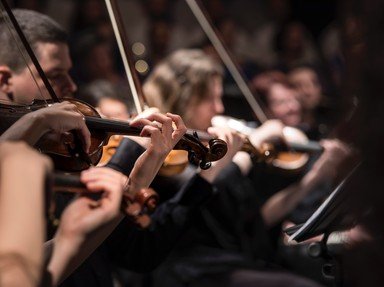
Classical Composers Through History Quiz
Common Practice period
The Common Practice period marked the flourishing era of Western classical music. It comprises the Baroque, Classical, and Romantic styles, roughly spanning the years from 1580 to 1910. Let's learn a few things about its greatest composers.
A classification quiz
by Gispepfu.
Estimated time: 3 mins.